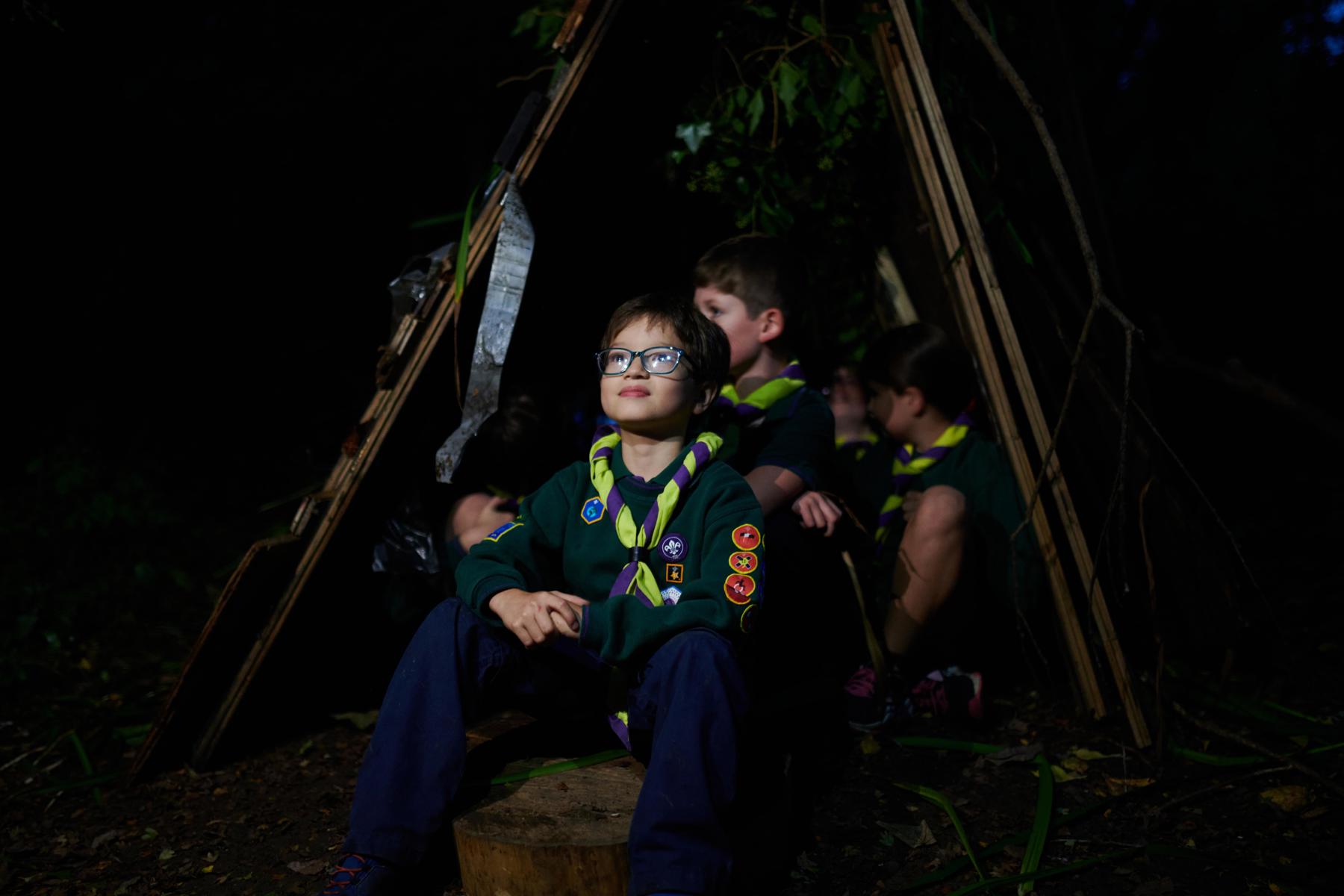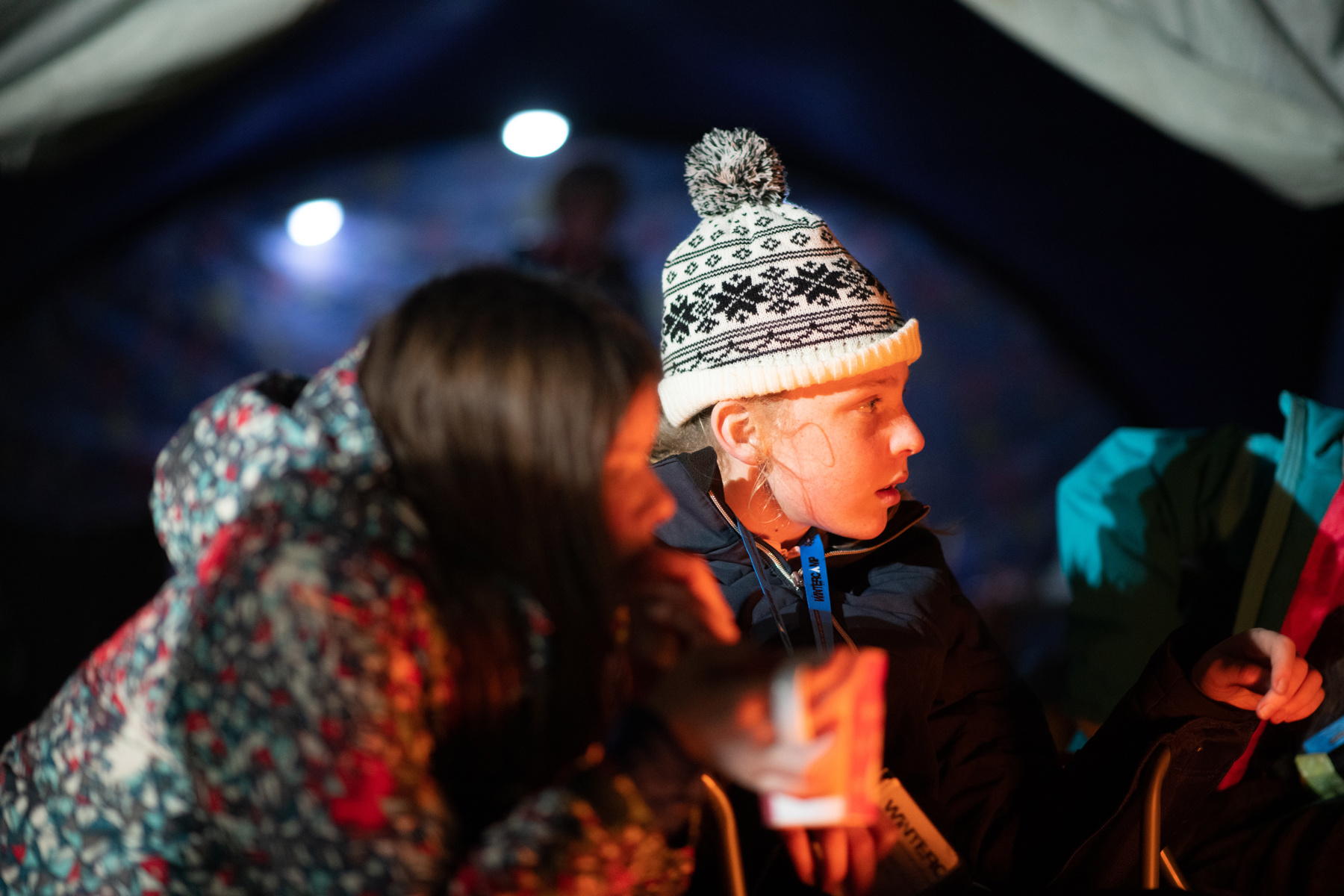21 activities to do outside in colder weather
As the days grow shorter, it's tempting to stay indoors, but just because the temperature's dropping doesn't mean the fun has to!
Colder weather is the perfect excuse to wrap up warm, head outside and try something new. From wintery adventures to active outdoor games, there's so much more to do than just sip hot chocolate (though we won’t judge if that’s part of your plan too!). So grab your hat and gloves, get ready to embrace the cold and discover how much fun the frosty outdoors can really be!

Add some magic to the dark winter nights by experimenting with light painting.
Bundle up and enjoy an evening of stargazing. Use binoculars or a telescope to spot constellations and planets, or use some star spotting phone apps.
Head to a local ice rink and enjoy practising your balance. Discover our example risk assessment to get you started.
Create beautiful sun catchers by freezing leaves and nature items in shallow pans of water. Hang them from trees to catch the sunlight during the day.
Gather around a campfire to share spooky, funny or silly stories while enjoying tasty s'mores, then warm up your vocal with our campfire songs.
Make some bird feeders and spot which feathered friends visit throughout winter.
Give everyone an empty matchbox and see how many small items they can collect during your walk.
Make the most of rainy days by hosting a puddle jumping contest. See who can make the biggest splash or have the most creative jumping style!
Paint a picture with watercolours, then set it outside in the rain to see how the raindrops change it.
Use wax crayons and paper to create bark rubbings from tree trunks and explore textures in nature. Why not turn them into bark monsters?
Head out on a torch-lit walk to spot or hear nocturnal wildlife, and create nature bingo cards with winter elements, such as pine cones and animal tracks.
You could ask everyone to stay quiet for several minutes, taking note of everything that they hear, such as owls.
Why not make journey sticks on your journey too? Give everyone a stick and encourage them to collect items, such as fallen leaves, feathers or flowers during the walk. They can attach these to the stick using string or elastic bands to create a visual record of the walk.
Blow bubbles outside on a cold day and watch them freeze in mid-air for a magical experience.
One player is the ‘tourist’ who is viewing the amazing statue garden. They get a torch. All the other players must stay as still as a statue, but they are allowed to move when the light is off, but as soon as the tourist turns the torch on they must stay still. When the torch is on the statue, the tourist tries to make the statue laugh or move. If they do, the statue joins the tourist’s team and they go help the tourist on the next round.
Take a night-time walk to enjoy the holiday lights in your area. You could do it with a warm drink or even as part of a chippy hike.
Use the winter months to construct and hang a bat house, bird house or hedgehog house, and help practice your DIY skills.
Fill water bottles with coloured water and freeze them for bowling pins. Use a ball, such as a tennis ball, for a fun outdoor game!
Pack warm food for a winter walk, such as soup or hot chocolate, to keep everyone toasty.
Enjoy flying a kite in the winter winds, adding colour to the grey sky. You could even make your own kite.
Grab a frisbee and head out to the local disc golf course during the day to get moving.
Use our guide to morse code, then race to see who can decode a pre-created message first.
One player is ‘it’ and they have a torch. ‘It’ guards a flag and tries to stop the other players from capturing it.
‘It’ can move around as much as they like, but watch out – if the flag is left unattended for too long it might get captured.
The rest of the players spread out and have to creep towards the flag as silently and slowly as they can, using trees and bushes for cover.
‘It’ has to listen carefully and look for players among the shadows, then try to tag the players with the torch beam before they reach the flag.
The winner is the first person to capture the flag, or the last person to be tagged if no-one reaches the flag.
The winner also gets to be ‘it’ when the game starts again.

Staying safe
All activities in Scouts must be safely managed. It’s important to choose an appropriate, accessible outdoor area. You may need to think about avoiding steps, being close to public transport, or steep gradients or including frequent breaks. You must have permission to use the location.
You must complete a thorough risk assessment and take appropriate steps to reduce risk. You should use our safety checklist to help you plan and risk assess your activity. Check out our guidance to help you carry out your risk assessment, including examples.
Always get approval for the activity, and have suitable supervision and an InTouch process. You may need some parents and carers to help.
Always check the weather forecast before running the activity.
You should inform parents and carers of any change in venue, days or times, and have a suitable drop-off/collection point. You could use our activity information forms, and always make sure everyone knows what people should bring and wear.
Before playing a wide game, there are some things you need to do to help keep everybody safe and make sure everyone can be included. Take a look at our advice on running active games safely and accessibly.
